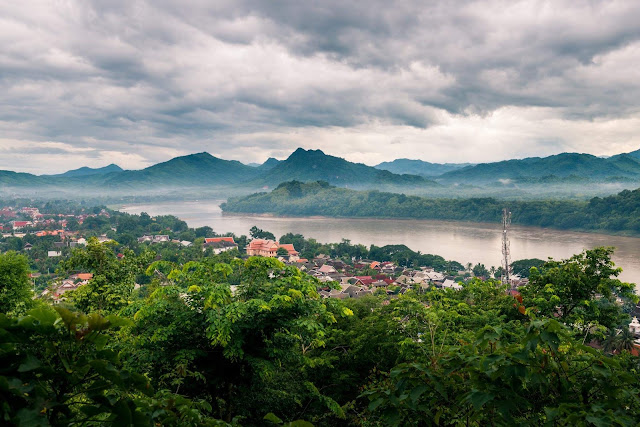Vang Vieng
Vang Vieng is the most popular destination in Laos among budget travellers and backpackers. It’s situated in central Laos and is surrounded by gorgeous natural scenery of karst hills, limestone mountains, caves and tunnels, and rivers. It could be considered to be Laos’ adventure capital. There are many tour companies offering adventurous activities, from kayaking and tubing to spelunking and hiking. The downtown bar scene is worth checking out as well.Bolaven Plateau
Southern Laos’ Bolaven Plateau is a landscape of thundering waterfalls, dense forests and tea and coffee plantations. Located more than 1,000 metres above sea level, the plateau is blessed with a milder and cooler climate than most of the rest of the country. The abundance of natural highlights, such as the Tad Fane and Dong Hua Sao waterfalls, invites visitors to strap on a pair of hiking boots and head into the jungle.Luang Prabang
Luang Prabang, set on a peninsula at the confluence of the Mekong and Nam Khan Rivers, was the royal capital of Laos until 1975, when the communists took over. The city is the most visited destination in Laos and, home to several amazing sights, is also a UNESCO World Heritage Site. In Luang Prabang, you will see bald orange-robed monks, old temples with golden roofs and French colonial buildings.Plain of Jars
One of the most unusual sights in Southeast Asia, and also one of the world’s main archaeological mysteries, the Plain of Jars occupies a large area around the city of Phonsavan. There are hundreds of stone jars or urns, spread out among several archaeological sites. No one knows their purpose. When you visit Laos, this is an absolutely must-see attraction.Wat Phu
Wat Phu, also known as Vat Phou, means ‘mountain temple’ and is a complex of ancient Khmer temple ruins. This complex of Hindu temples dates from between the 11th an 13th century and consists of tall trees, pavilions, pillars, courtyards, shrines, palaces and much more. The historical importance of this marvelous site is shown in the fact that it was declared World Heritage by UNESCO.Vientiane
Vientiane is the capital of Laos and features many fascinating sites and sights. It’s a free-spirited city with a beautiful waterfront that lines the Mekong River. Other attractions are the stunning Phat That Luang stupa, the hundreds of Buddha statues in Wat Sisaket and the triumphal arc known as Patuxai. Additionally, you can also enjoy the incredibly relaxed atmosphere and the surprising mix of cultures— Chinese, Vietnamese, Lao, French and American.Mekong River
Southeast Asia’s greatest river is more than 4,000 kilometres long, a large section of which lies in Laos. In a country that lacks proper roads and is covered with mountains and hills that aren’t always easy to access, the Mekong River provides the major transportation route. An absolute highlight of any trip to Laos, or to Southeast Asia in general, is taking a cruise on the Mekong River.See more: What to eat when traveling in Laos
Source: Internet


































